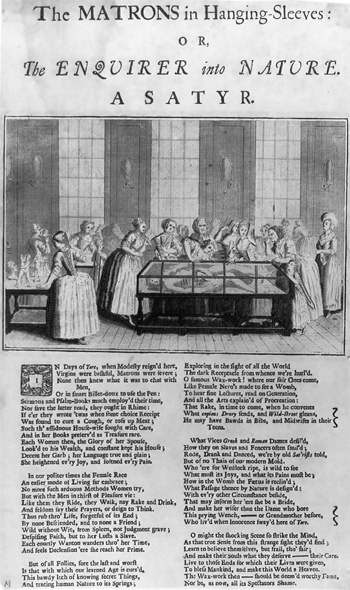
“The Matrons in Hanging-Sleeves,” ca. 1802
|
Gender and Public Space in America and Europe, 1700-1900 This graduate readings course focuses on the development of the public sphere from the 18th through the early 20th centuries and its role in the transformation of gender roles, developments that had important effects on both American and European history. It particularly addresses criticism of the work of Jürgen Habermas and others, especially the mounting critique that those scholars have misleadingly characterized the public sphere as a primarily, or even exclusively, male environment. Most important, the class highlights new approaches to gender studies. The course is divided into four topical sections featuring literature and short primary documents that plumb the varieties of gender and the public: the beginnings of public spheres and their connection to nationalism and citizenship; consumption and commerce; the geography of the gendered city; and the public politics of sexuality and the body. Each of these sections will treat race and class as well as masculinity and femininity. |



